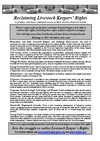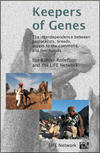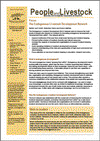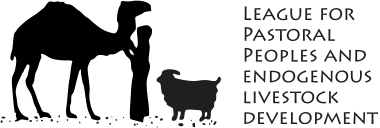Reclaiming Livestock Keepers’ Rights

Reclaiming Livestock Keepers’ Rights to produce and have continued access to their diverse livestock breeds
2-page call for support for efforts to protect the rights of livestock keepers.
Download 106 kb
Also available in French as:
Reconquérir les droits des éleveurs de produire et de sécuriser leur accès aux races animales
Download 108 kb
Keepers of genes

The interdependence between pastoralists, breeds, access to the commons, and livelihoods
This book by Ilse Köhler-Rollefson and the LIFE Network focuses on a key threat to the survival of pastoralists and their livestock breeds: the loss of access to grazing and water. Pastoralists are losing their traditional pasturelands for many reasons – new restrictions on grazing in nature reserves, the expansion of irrigated agriculture, expropriation by settled villagers, and the elimination of fallow land because of intensified cropping.
Less grazing land means that pastoralists cannot maintain a herd large enough to be economic. Many are forced to give up livestock production altogether. That does not just mean the loss of livelihoods for the pastoralists themselves. It also means settled villagers can no longer rely on the hardy stock from pastoralists to pull their ploughs and provide them with meat and milk. And it spells doom for many valuable livestock breeds and the gene pool they represent.
Based on years of research in rural India, this book has wide applicability to other parts of the world where pastoralism is important. It forms a valuable input to the First International Technical Conference on Animal Genetic Resources, to be held in Interlaken, Switzerland, in September 2007.
Download:
Complete book 1257 kb, 80 pages
Text only 355 kb, 70 pages
Cover 996 kb
Photos 324 kb, 8 pages
People and Livestock newsletter

The April 2007 issue of the People and Livestock newsletter focuses on endogenous livestock development. The newsletter is now published by the Endogenous Livestock Development Network, www.eldev.net. LPP is a founding member of this network.
Read online or download 158 kb, 9 pages
- Go to the previous page
- 1
- …
- 63
- 64
- 65
- 66
- 67
- 68
- 69
- …
- 82
- Go to the next page
